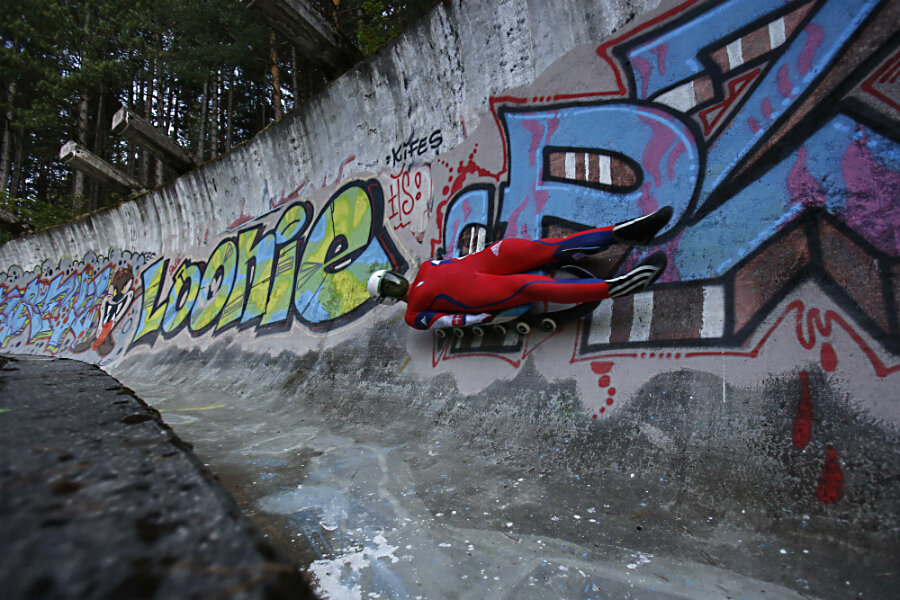Thanks to volunteers, Olympic track at Sarajevo makes a comeback
Loading...
| Mt. Trebevic, Bosnia-Herzegovina
Sports enthusiasts and former athletes in Bosnia have taken it upon themselves to reclaim some of the glory Sarajevo savored as host of the 1984 Olympics – and in the process rekindled the flame of international cooperation.
Since the country lacks the resources to rebuild the Olympic facilities that were destroyed in the deadly war that followed the breakup of Yugoslavia, volunteers bought tools, rolled up their sleeves and got to work.
At first, they planned to restore the bobsled and luge track on Mt. Trebevic just so it could be used by the Bosnian national team for summer training. But the previously abandoned facility became a draw for athletes from around Europe.
"We bought some tools with our own money and started cleaning the track from vegetation, debris and mud," Senad Omanovic, the head of Bosnia's Bobsleigh Federation, recalled. "We had trees growing out of the track."
The 1992-95 Bosnian war was the most brutal conflict on European soil since World War II. It took over 100,000 lives and turned more than half the population into refugees.
It also trashed the decade-old Olympic facilities on the mountains around Sarajevo, venues residents once proudly looked up to from downtown as symbols of one of the city's most glorious moments. During the war, Sarajevans hid from the artillery and snipers Bosnian Serbs had placed on the Dinaric Alps.
War turned the bobsled and luge track on Mt. Trebevic, overlooking Sarajevo, into a concrete skeleton that eventually became covered with graffiti and trash. Little remains of the ski-jump facilities on Mt. Igman, another site of fierce fighting. The men's downhill courses on Bjelasnica were resurrected as the city's main ski resort, but only after the land mines around them were cleared.
It took Omanovic and his teammates years to clean the bobsled and luge track where in 1984 teams from the German Democratic Republic took the gold and silver medals. They could only approach the Trebevic track after mine-removal experts cleared its entire length.
As word spread through Eastern Europe that the Olympic track had been fixed up, teams in other countries approached Omanovic to ask about practicing there. The first was from Slovakia.
Omanovic recalled frankly telling the Slovaks the facility lacked locker rooms, timing sensors and even toilets. They insisted the Sarajevo track, despite its rough history and condition, was among the best of the nine tracks available around the world for summer training.
Tackling the course on wheeled equipment, racers can achieve speeds of 130 kilometers (81 miles) per hour. After Slovakia, teams from Poland, Turkey, Slovenia, Croatia and Serbia followed.
"So this became a regional training center," said Omanovic, who now hopes the track will one day achieve its "old glory."
Jacob Simonek, a member of the Slovakian team that has practiced in Sarajevo six times now, said the track was "a bit bumpy but good" despite its age and battle scars.
On the other end of town, the ski-jump facilities on Mt. Igman still stand as sad relics of war.
Selver Merdanovic, a former ski jumper for Bosnia, has started working to revive the two small jumps so the 15 children from his club team can practice there. Rebuilding the high jumps, an expensive endeavor, remains a distant dream.
"I'm trying to return this sport to Bosnia," Merdanovic said. "I wish this to be my legacy."
• Aida Cerkez in Sarajevo contributed to this story.







